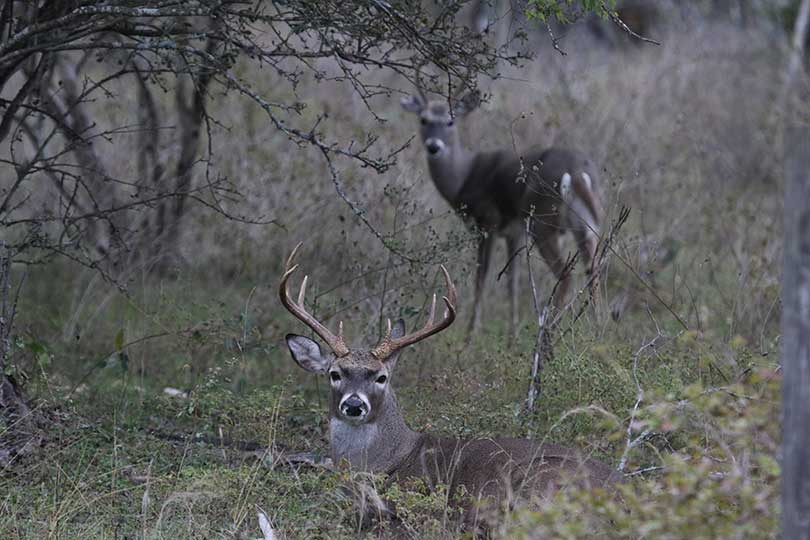Deer season is over in most parts of the state, except for a few counties. But Texas AgriLife Extension Service experts say landowners can continue to provide supplemental feed through the winter to keep deer populations healthy.
The general Texas deer season closed on Jan. 1 for hunters in the north zone and will close on Jan. 15 for hunters in the south zone.
But deer can undergo nutritional stress during the hardest winter months of January through mid-March, according to Dr. Billy Higginbotham, AgriLife Extension wildlife specialist.
Acorns, forbs and native food supplies become scarce during this time, according to Higginbotham.
Landowners can keep deer feeders on their property running after deer season closes to help provide access to a food source.
“Corn is a good supplemental energy source for the deer leading up to spring green-up,” Higginbotham told AgriLife Today. “Despite a heavy acorn crop, those food sources will eventually be gone and the availability of supplemental feed can help.”
Small grain food plots can also be improved with nitrogen. Rye, wheat and oats may begin to show yellowing in December and January.
Higginbotham recommends top dress plots with 200 pounds of 34-0-0 nitrogen/phosphorous/potassium fertilizer or equivalent per acre to boost production.
“Deer will continue to use these plots until spring-green up,” Higginbotham said.
To protect food plots and feeders from wild pigs, excluder pens should be built. The presence of wild pigs can cause deer to alter their behavior because they try to avoid wild pigs.
He recommends landowners conduct post-season deer census in January before antlers are shed.
“Typically, in East Texas, you want to census deer populations by mid-February,” Higginbotham said. “You may not be able to differentiate does from bucks that have shed their antlers beyond that point.”
Relatively mild weather conditions and an abundant acorn supply limited deer movement in East Texas.
Higginbotham said the end of deer season provides opportunities for landowners to address wild pigs.
“As native food supplies like acorns continue to dwindle, wild pigs will become more vulnerable to baiting and therefore easier to pattern for trapping and strategic shooting operations,” he said.

